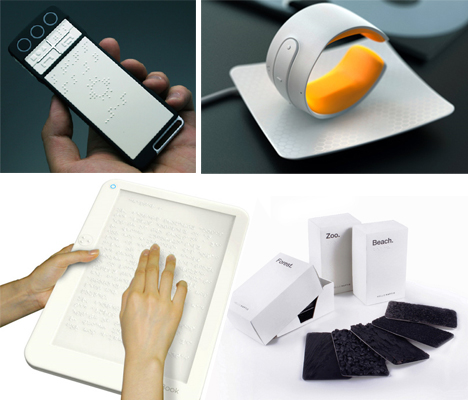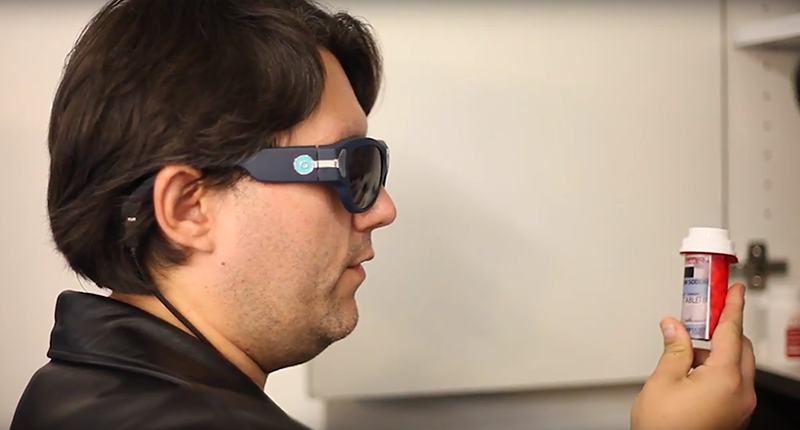Empowering Freedom With Assistive Technology for the Blind
The integration of assistive innovation right into the lives of people with visual impairments represents a significant improvement in promoting independence and self-sufficiency. From ingenious display readers to sophisticated wise walking sticks, these devices not only enhance daily navigation and communication however likewise equip individuals to engage meaningfully in different elements of life. As we check out the myriad benefits and real-world applications of these innovations, it comes to be critical to examine the underlying factors that contribute to their effectiveness and the possibility for future growths in this essential area.
Introduction of Assistive Modern Technology

The development of assistive modern technology is based in concepts of inclusivity and empowerment. Technologies in software application, equipment, and sensory improvements supply customers with options customized to their specific needs. From screen visitors that convert message to speech, to responsive tools that communicate info through touch, these tools change the means individuals engage with their environments.
In enhancement to sensible applications, assistive technology cultivates higher social addition and participation in numerous markets, including education and work (Screen readers for the blind). As research study and development proceed to develop, the potential for assistive modern technology to even more enhance the lives of aesthetically impaired people remains encouraging, paving the means for a more fair society where every person can flourish
Kinds Of Assistive Gadgets
A selection of assistive gadgets have actually emerged to sustain individuals with visual problems, each developed to fulfill particular demands and enhance everyday functioning. These gadgets vary from low-tech solutions to sophisticated developments, giving diverse choices for users.
Low-tech gadgets consist of magnifiers and large-print materials that help in analysis and writing. Braille devices, such as Braille stylus pens and slates, make it possible for tactile analysis and interaction. Positioning and mobility help, like white canes, aid individuals browse their environment safely.
On the higher end of the spectrum, digital magnifying systems and display readers provide considerable assistance. Digital magnifiers allow users to expand message and photos on displays, while display viewers convert electronic content into synthesized speech, assisting in accessibility to details on smartphones and computers.
Smartphone applications also play a critical duty, providing features like message acknowledgment and navigating aid. Wearable technology, such as smart glasses equipped with augmented fact, is becoming an encouraging device to boost situational recognition.
Advantages of Assistive Innovation
The combination of assistive innovation considerably enhances the lifestyle for individuals with aesthetic problems. These modern technologies encourage individuals by promoting independence, enabling them to browse their atmospheres better and carry out daily jobs with better simplicity. Screen readers and magnifying software application allow people to gain access to digital details, promoting professional and instructional chances that may have formerly been out of reach.
Furthermore, assistive tools such as wise walking canes and GPS applications offer real-time navigation help, enhancing flexibility and security. This increased freedom not just enhances self-worth but additionally encourages social involvement, allowing individuals to participate more totally in their communities.
Assistive modern technology also assists in communication, assisting customers get in touch with others via voice recognition and text-to-speech applications. This ability is essential for maintaining connections and accessing critical info.
In addition, the customization choices readily available with many assistive innovations make sure that customers can tailor gadgets to their certain demands, further improving functionality and performance. Overall, the benefits of assistive innovation for people with aesthetic problems are extensive, promoting a more inclusive culture where every person can seek their objectives and aspirations.
Instance Research Studies and Success Stories
Highlighting the transformative effect of assistive innovation, various instance research studies illustrate just how people with visual problems have successfully incorporated these tools right into their day-to-days live. One compelling instance involves an university student who made use of screen analysis software application to browse on the internet sources and academic products successfully. This technology not just facilitated her education and learning but additionally enhanced her self-confidence in taking part in conversations and group jobs.
An additional situation research features a specialist who utilizes a smartphone application created for navigation and item acknowledgment. By utilizing this application, he has gained back freedom in both his personal and job settings, allowing him to commute separately and involve with colleagues a lot more effectively.
Furthermore, a senior citizen shared her experience with braille e-readers, which enabled her to access a huge selection of literature and stay gotten in touch with her community with publication clubs.
These success tales underscore the vital role of assistive technology in promoting freedom, enhancing lifestyle, and promoting social assimilation for people with visual impairments (Screen readers for the blind). By accepting these cutting-edge devices, customers can conquer obstacles and take opportunities that contribute to their professional and personal fulfillment

Future Fads in Assistive Innovation
Technology in assistive technology is poised to redefine the landscape of assistance for people with visual problems. Arising trends highlight the assimilation of expert system (AI) and equipment learning, which improve the performance of tools that assist with navigation and info access. As an example, AI-driven applications are now efficient in translating aesthetic information in real-time, making it possible for users to engage with their environment much more separately.
Additionally, the advancement of wearable technology is progressing swiftly. Smart glasses furnished with enhanced truth (AR) can offer audio descriptions of environments, transforming how users connect with public rooms. These gadgets not only promote freedom however also foster social inclusion.
In Addition, the Web of Things (IoT) is making homes smarter, permitting for smooth connectivity between day-to-day devices and assistive devices. This connectivity encourages customers by allowing voice-activated controls and computerized reactions tailored to specific needs.
Verdict
Finally, assistive modern technology plays an essential role in equipping individuals with aesthetic problems by improving their freedom and interaction with their environments. The diverse variety of devices and applications available not just facilitates navigation Mobility aids for visually impaired users and interaction but additionally advertises social combination and possibilities for personal and expert growth. As advancements continue in this area, the possibility for improving the lifestyle for those with aesthetic impairments will broaden, cultivating greater autonomy and empowerment.
